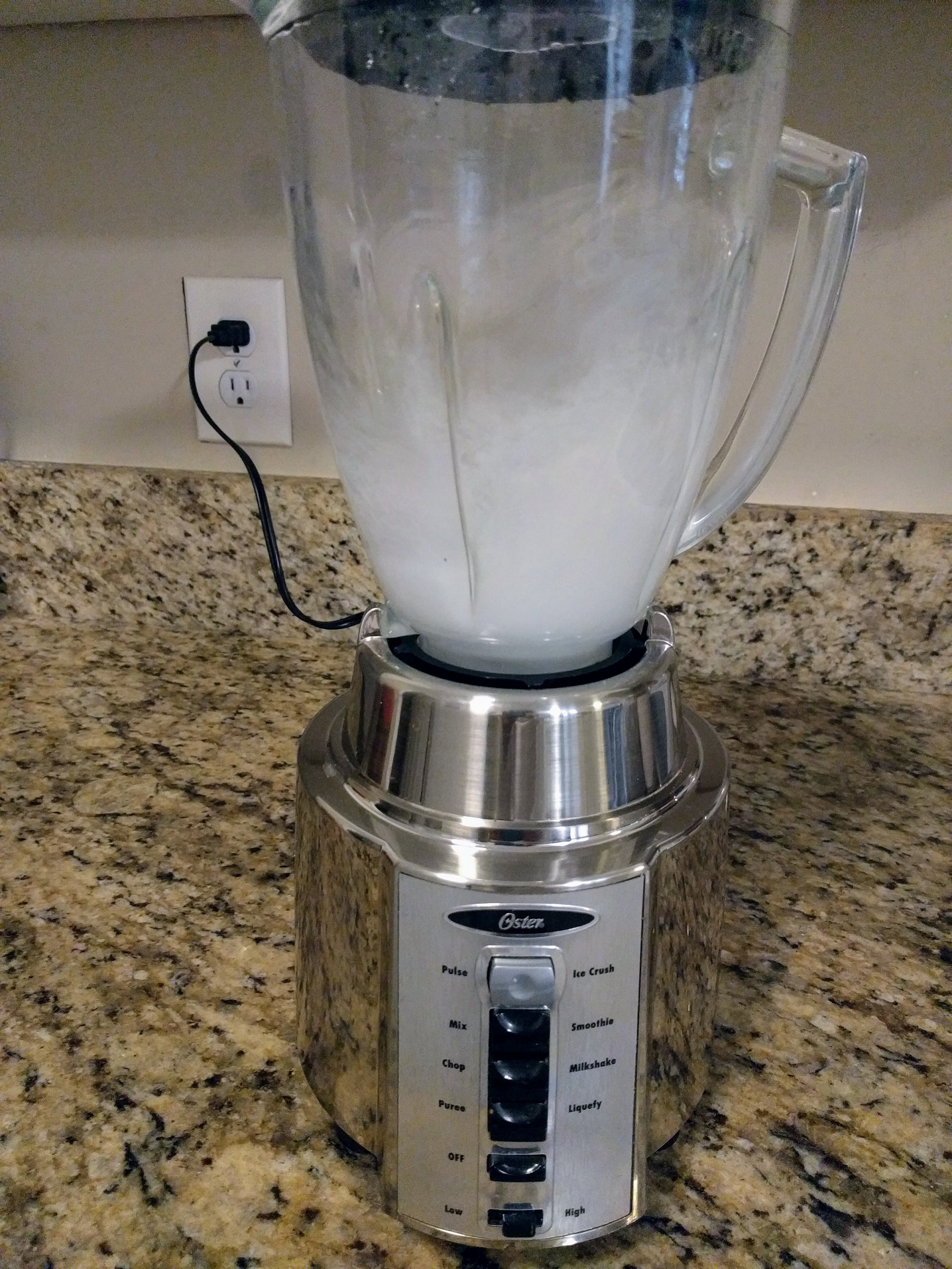Does Movement in Water Affect Its Composition?
Movement is an essential part of a healthy body of water. In large bodies of water, this is caused by gravity and can be seen as a tide or current. Smaller bodies of water can be moved by the wind or plant and animal life. Even your tap water is moved mechanically from its source to the faucet. If movement is beneficial for water, can additional movement improve your water? We decided to test this theory using Test Assured’s 4 Test Kit Set for Schools and Science Fairs. This set includes 4 test kits and is appropriate for children in grades three through twelve.
For our test, we will be sampling tap water that has been moved in a blender for different amounts of time. This is an excellent science fair experiment that can be performed at different settings, for different times, to produce a variety of results.
Supplies
The first thing you need to do is gather your supplies:
- Test Assured 4 Test Kit Set with TD Meter
- 2 cups of tap water
- Blender
- Paper towels
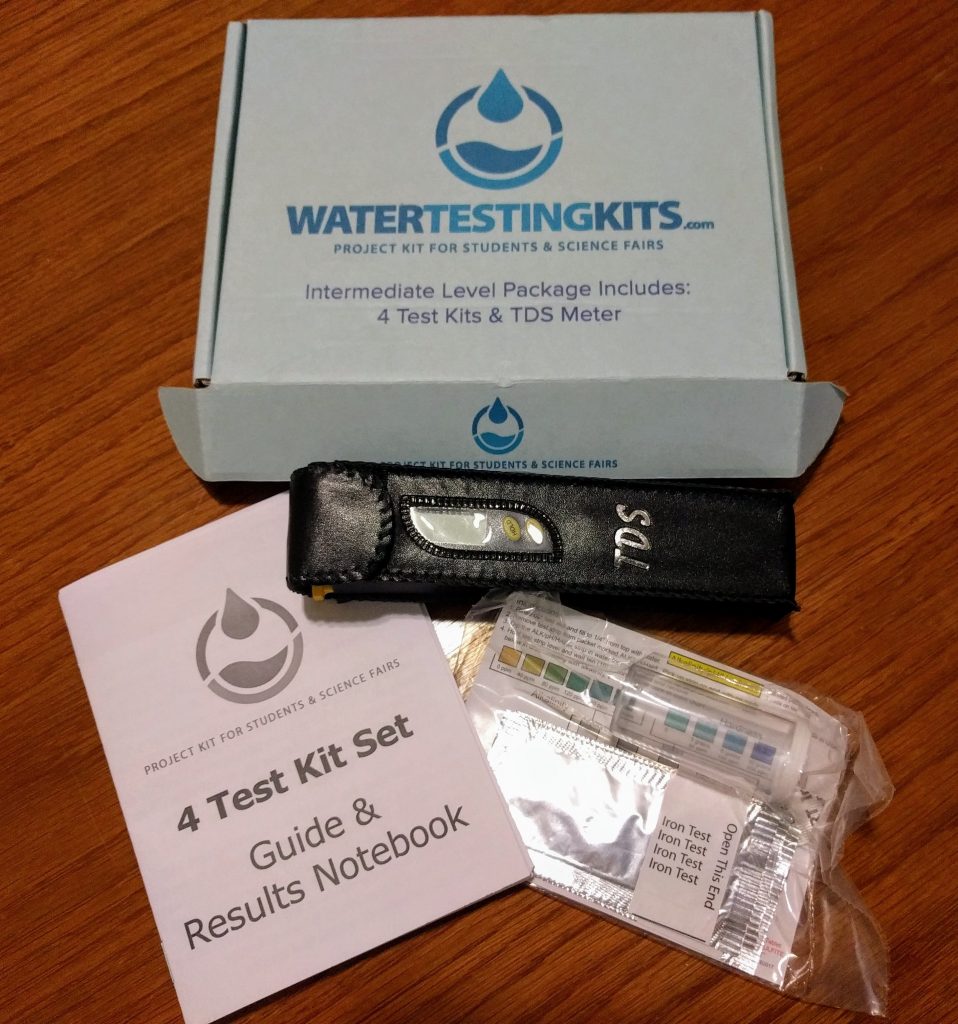
Preparation
Before you start testing, you’ll need to prepare your water samples. For this experiment, you will start with 2 cups of water to create four samples:
- ½ cup unblended tap water for your control
- ½ cup tap water blended for 30 seconds
- ½ cup tap water blended for 1 minute
- ½ cup tap water blended for 3 minutes
We blended all of our samples (except the control) on the highest setting. After blending each sample, put it aside in a mug or glass to complete the TDS test before pouring samples into the vials.
Feel free to choose any blender setting and vary the length of time. You can even use a second testing kit to test more samples. No matter what settings or times you choose, don’t forget to label your vials and write down the corresponding sample information in the results notebook.
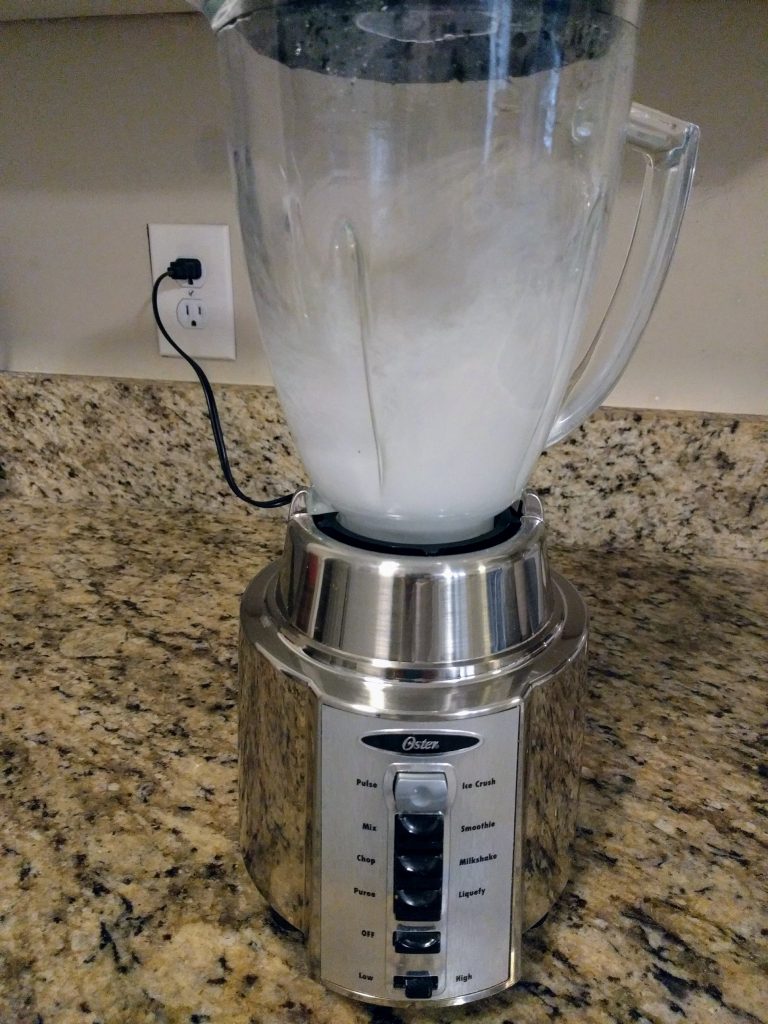
Testing
The first test you want to start with is for total dissolved solids, using the TDS meter. The meter will not fit in the test vials, so it is easier to complete this part of the experiment before transferring your samples to the vials. To perform the TDS test, simply turn on the meter and submerge the prongs in the samples. Rinse the meter with clean water and pat dry between each test. Record your results in the results notebook.
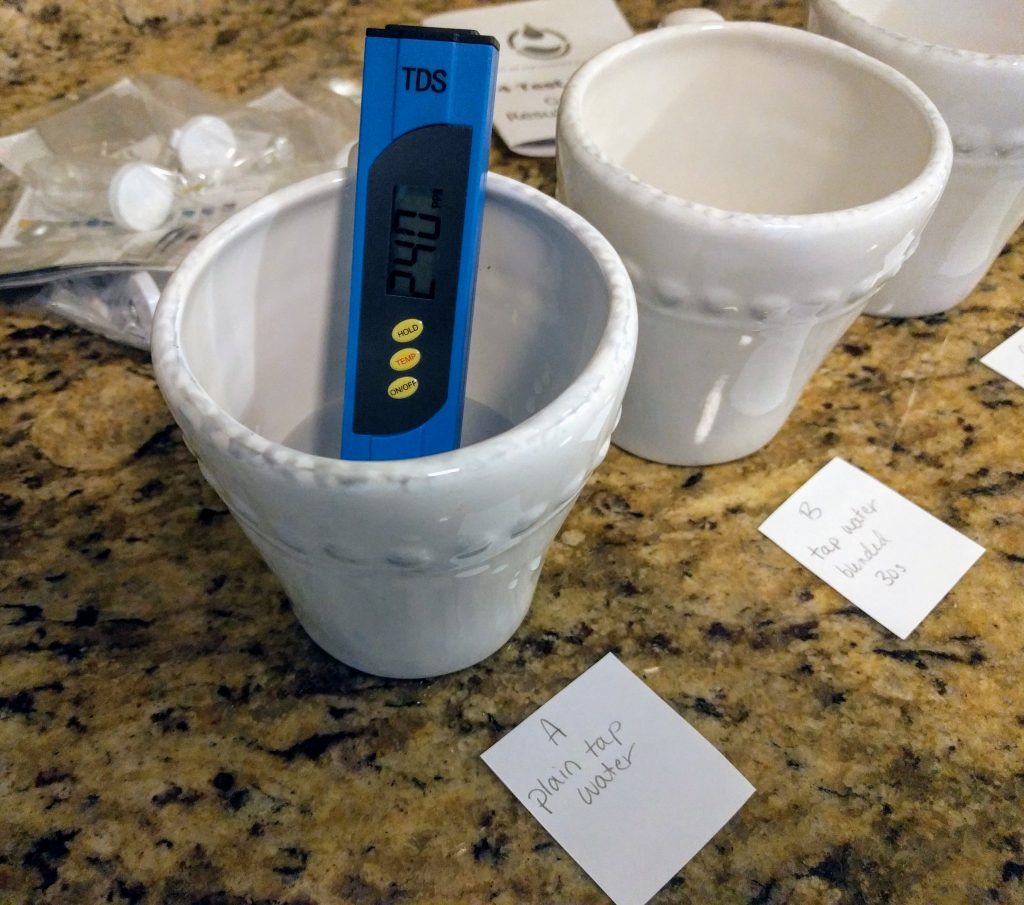
After completing the TDS test, you will need to pour your samples into the vials you labeled. Fill each vial to within a ¼” of the top. Be sure to wipe up any spills, so you don’t contaminate the test strips.
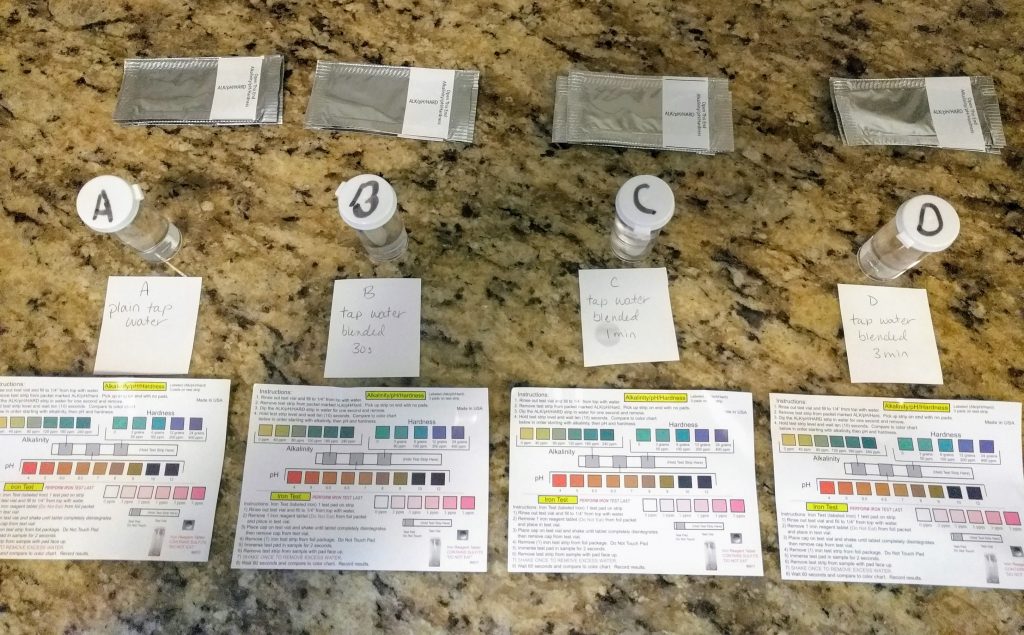
Before you get started with the tests, now is a good time to make some visual observations. If blending any of the samples changed their appearance, take notes about how your samples look. These observations can be written in the “Notes” on the last page of the results notebook.
Now you’re ready to get started with the rest of the tests. Follow these instructions to complete the remaining tests.
Alkalinity/pH/Hardness Test
- Remove the test strip from the packet labeled, “ALK/pH/Hard”
- Pick up the strip on the end with no pads
- Dip the strip in the sample for one second and remove
- Hold the test strip level and wait 10 seconds
- Place the strip as shown in the picture and compare to the color chart for alkalinity, pH, and hardness
- Record your results in the results notebook

Total Chlorine/Copper/Nitrate/Nitrite Test
- Remove the test strip from the packet labeled, “CL/CO/NA/NI”
- Pick up the strip on the end with no pads
- Dip the strip in the sample three times and remove – DO NOT SHAKE OFF EXCESS WATER
- Hold the test strip level for 2 seconds
- Place the strip as shown in the picture and compare to the color chart for chlorine and copper
- Wait 45 seconds before reading the results for nitrate and nitrite
- Record your results in the results notebook

Iron Test (Complete this test last)
- Remove one iron reagent tablet from the foil packet and place in test vial (the reagent could alter the results of other tests which is why the iron test is completed last)
- Place the cap on the test vial and shake for approximately one minute, until the tablet is completely dissolved
- Remove the test strip from the packet labeled, “Iron Test”
- Dip the strip in the sample for 2 seconds
- Shake the strip once and wait 60 seconds
- Place the strip as shown in the picture and compare to the color chart for iron
- Record your results in the results notebook

Repeat all three tests for each of your samples.
Results
Now that you have completed each of the four tests on your samples, it’s time to look at your results. Ask yourself these questions:
- Did blending the water change the appearance of any of the samples?
- Did blending the water affect the test results for any of the samples?
- Was there a setting or a time that had a significant impact on the composition of the water?
- Based on your results, do you think blending water would be an effective way to make it safer to drink?
- What results did you find the most surprising?
Record your answers on the “Notes” page. If you are using this as a science fair project, you can use clear tape to fix the test sticks to the color charts to display your results.

